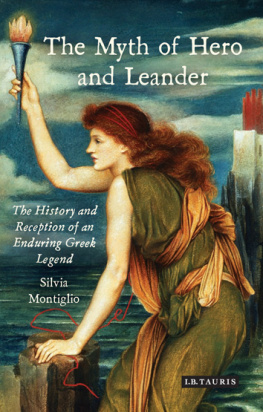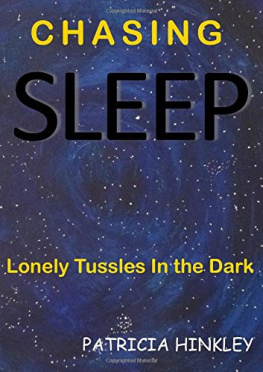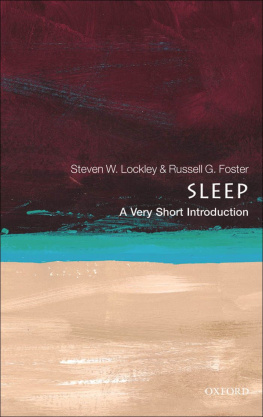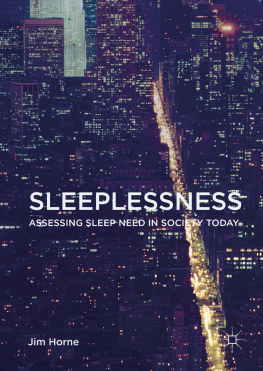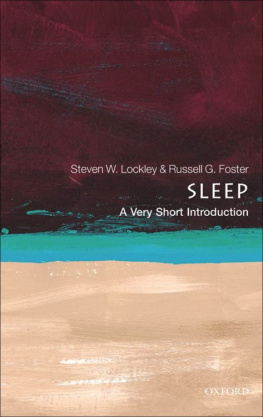
Silvia Montiglio is Basil L. Gildersleeve Professor of Classics at Johns Hopkins University. Her previous books include Silence in the Land of Logos; Wandering in Ancient Greek Culture; From Villain to Hero: Odysseus in Ancient Thought; and Love and Providence: Recognition in the Ancient Novel.
Through a series of learned and perceptive close readings, Silvia Montiglio shows how ancient Greek writers drew on the fundamental human experience of sleep to structure their narratives, delineate their characters, and represent the intersections of divine and human activity. Montiglios deep scholarship is lightly worn, and she maintains a clear focus by concentrating on a distinct tradition of mythological and fictional narratives in the genres of epic, drama, and the novel. Through an understated, associative, accretive mode of exposition, she offers readers the particular pleasure of seeing her argument emerge gradually from a wealth of closely observed examples. This is a subtle, wide-ranging, and illuminating study, from which any student of Greek literature stands to learn a great deal.
Sheila Murnaghan, Allen Memorial Professor of Greek, University of Pennsylvania
This enthralling and thoroughly enjoyable book helps us to understand how different literary genres deal with the seemingly unremarkable and inactive but actually deeply nuanced and intriguing things that happen while the ancients either sleep or wrestle with wakefulness. Silvia Montiglio has written a masterpiece of literary analysis which at the same time discloses a fascinating chapter in the history of Greek culture.
Marco Fantuzzi, Professor of Ancient Greek Literature, University of Macerata and Visiting Professor of Greek, Columbia University; author of Achillesin Love: Intertextual Studies
The Spell of Hypnos makes visible the subtle and unexpected play between storytelling and sleep in ancient Greek literature. In a study that is both learned and innovative, Silvia Montiglio points her reader towards the various rhythms, interruptions, and creative possibilities of sleep and wakefulness across a broad range of texts. The chapters are rich and engaging, drawing a series of thematic connections between epic, drama and the novel, which together demonstrate that the time for sleep far from being a blank space in the structure of a narrative represents a critical juncture in the formation of both plot and character. Her reading opens up new modes of interpretation and is especially suggestive for its ability to illustrate points of contact between different genres and authors. The sleepscapes revealed here are fascinating for the windows they open onto such fruitful topics as emotion and agency, isolation and belonging, or divine and poetic justice. It is rare to find a study that deals so expertly with such a diverse span of genres, and rare again to find one that does so through such an absorbing topic. This is an important, enjoyable, and illuminating book.
Alex Purves, Associate Professor of Ancient Greek Literature, UCLA, author of Space and Time in Ancient Greek Narrative
THE SPELL OF
HYPNOS
Sleep and Sleeplessness in Ancient
Greek Literature
S ILVIA M ONTIGLIO

Published in 2016 by
I.B.Tauris & Co. Ltd
London New York
www.ibtauris.com
Copyright 2016 Silvia Montiglio
The right of Silvia Montiglio to be identified as the author of this work has been asserted by the author in accordance with the Copyright, Designs and Patents Act 1988.
All rights reserved. Except for brief quotations in a review, this book, or any part thereof, may not be reproduced, stored in or introduced into a retrieval system, or transmitted, in any form or by any means, electronic, mechanical, photocopying, recording or otherwise, without the prior written permission of the publisher.
Every attempt has been made to gain permission for the use of the images in this book. Any omissions will be rectified in future editions.
References to websites were correct at the time of writing.
Library of Classical Studies 13
ISBN: 978 1 78453 351 9
eISBN: 978 0 85773 983 4
ePDF: 978 0 85772 659 9
A full CIP record for this book is available from the British Library
A full CIP record is available from the Library of Congress
Library of Congress Catalog Card Number: available
CONTENTS
LIST OF ILLUSTRATIONS
Henry Fuseli, The Sleepwalking Lady Macbeth (17814), Paris, Louvre.
Bronze head of Hypnos, Roman copy of a Hellenistic original (first or second century AD ), London, The British Museum.
Eros Sleeping, bronze statue, Greek or Roman (third century BC first century AD ), New York, The Metropolitan Museum of Art.
John W. Waterhouse, Sleep and his Half-Brother Death (1874), Private Collection.
Euphronios Painter, red-figure calyx crater (Euphronios Vase, late sixth century BC ), Rome, Villa Giulia.
Pierre-Narcisse Gurin, Clytemnestra hesitating before killing Agamemnon (1817), Paris, Louvre.
Eumenides Painter, red-figured crater (c.380 BC ), Paris, Louvre.
Sleeping Ariadne, Roman copy of a Hellenistic sculpture (second century BC ), Rome, Vatican Museums.
Marc Chagall, Midday in Summertime (1961), lithograph, from Daphnis and Chloe.
Niccol Pisano, An Idyll: Daphnis and Chloe (c.1500), London, The Wallace Collection.
Franois Boucher, Daphnis and Chloe (1743), London, The Wallace Collection.
LIST OF ABBREVIATIONS
CI (Commentary on Homer's Iliad):G. S. Kirk (general ed.), The Iliad: A Commentary (Cambridge, Cambridge University Press, 198593), 6 vols (vol. 1 [Il. 14] by Kirk; vol. 2 [58] by Kirk; vol. 3 [912] by B. Hainsworth; vol. 4 [1316] by R. Janko; vol. 5 [1720] by M. Edwards; vol. 6 [2124] by N. Richardson).
DK: H. Diels and W. Kranz (eds), Die Fragmente der Vorsokratiker, sixth edition (Zurich, Weidmann, 19968), 3 vols.
LSJ: H. G. Liddell and R. Scott (eds), GreekEnglish Lexicon, 1940, Rev. H. S. Jones, ninth edition, Supplement (Oxford, Oxford University Press, 1968).
CO (Commentary on Homer's Odyssey): Alfred Heubeck, J. B. Hainsworth, and Stephanie West (general eds), A Commentary on Homer's Odyssey (Oxford, Oxford University Press, 198892), 3 vols (vol. 1 [Od. 18] by the editors; vol. 2 [916] by Alfred Heubeck and Arie Hoekstra; vol. 3 [1724] by Joseph Russo, Manuel Fernndez-Galiano and Alfred Heubeck).
ACKNOWLEDGEMENTS
Like most books, this one has incurred numerous debts. My gratitude goes to Marco Fantuzzi, Don Juedes, Kostas Kapparis, Nicholas Kauffman, Jim Marks, Sheila Murnaghan, Christopher Pelling, Alex Purves and the anonymous readers of I.B.Tauris, one of whom in particular was especially helpful. Audiences at Columbia University and at the University of California, Los Angeles, have provided ideal sounding boards for some of my thoughts. At I.B.Tauris, my editor Alex Wright has followed the book's production with patience and competence, while assistant editor Baillie Card has secured permissions for the images. One person, I am afraid, has lost sleep to keep up with the toiling of the author: Gareth Schmeling, whose wit and love never doze off. Thank you.
INTRODUCTION
Scope and goals
In George Eliot's Silas Marner, the estranged and secret wife of the gentleman Godfrey Cass plunges into a drugged sleep by the roadside on New Year's Eve, holding their little child. She is making her way to her husband's mansion, planning to ruin him, but her addiction to opium gets the better of her determination. She sleeps unto death. The child leaves her mother's icy embrace and follows a beam of light, which takes her to a small house, where she lies down before the fireplace and falls into a deep slumber. She is still asleep when Silas, who lives in the house, returns from an errand and finds her wrapped in the glow and warmth of the firelight.
Next page

